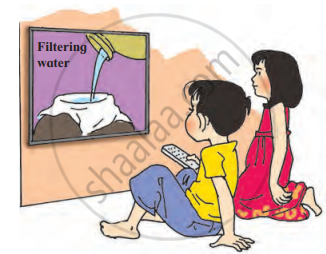Topics
Our Earth and Our Solar System
Motions of the Earth
The Earth and Its Living World
Environmental Balance
Family Values
Rules Are for Everyone
Let Us Solve Our Own Problems
Public Facilities and My School
Maps - Our Companions
Getting to Know India
Our Home and Environment
Food for All
Methods of Preserving Food
Transport
Communication and Mass Media
Water
Clothes - Our Necessity
The Environment and Us
- Deforestation and Its Causes
- Consequences of Deforestation
- Pollution and Its Types
- Water Pollution and Its Causes
- Air Pollution and Its Causes
- Soil Pollution and its Causes
- Environmental Balance
- Our Needs and the Environment
- Global Efforts for Protection of the Environment
- Efforts to Maintain Biodiversity
- Devrais - a Boon for All Living Creatures!
Constituents of Food
Our Emotional World
Busy at Work - Our Internal Organs
Growth and Personality Development
Infectious Diseases and How to Prevent Them
Substances, Objects and Energy
Community Health and Hygiene
Public Health Service Facilities:
1. Preventing diseases and epidemics: To stop the spread of infectious diseases and epidemics, the government runs various health and community programs. These programs help keep the entire community healthy and prevent diseases from spreading.
2. Vaccination Programmes: The government organises community vaccination programmes where children are given important vaccines to protect them from diseases. Trained health workers give the vaccines, and sometimes special camps are set up in villages and towns to make it easy for everyone to get vaccinated.
3. Primary Health Centres: In villages, primary health centres (PHCs) have been set up to provide basic health services. These centres help people get medical care quickly without needing to travel far. Facilities like mobile dispensaries (doctors who travel to different places), ambulances, and a welfare fund for the disabled are available to help the community.
4. Health Services Available: Through these health programmes, people can access important services like:
- Urine and blood tests
- X-rays
- Ultrasound and other scans
This helps ensure that people get the medical care they need without delay.
5. Educating People on Health and Cleanliness: The government also teaches people the right way to handle drinking water and food to avoid contamination. People are encouraged to keep their surroundings clean to prevent diseases from spreading.
6. Laws for Public Cleanliness: It is now illegal to spit in public places because spitting can spread diseases. This law helps to keep public places clean and reduce the risk of infections.
7. Using Mass Media for Public Awareness: The mass media (TV, radio, newspapers) is used to teach people about health and hygiene. These messages help raise awareness and remind people to keep themselves and their surroundings clean to stay healthy.

Public awareness programme on TV
